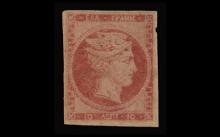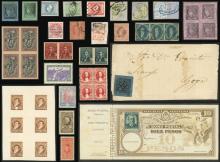A Kangaroo in a Map - the First Australian Commonwealth Stamps
Published

Government-issued stamps, particularly those that are issued to commemorate new governments or the development of a new postal office often make use of portraits of leaders and important figures. But this is not the case with Australian Commonwealth - for its Australian Commonwealth stamp; the authorities took on a more novel approach. For the first edition of stamps, the authorities decided on a kangaroo embedded within the Australian map. Its debut was met with great interest, discussions and loads of controversy.
Choosing the Design for the Australian Stamps
It all started with a design competition held on January 1911 to select the design for the first Australian Commonwealth stamps. The competition was enthusiastically received, with more than 500 registered participants contributing
more than 1,000 designs. At the closing of the competition, the first prize featured a portrait of King George V flanked by a kangaroo, emu and state emblems. The designer, Hermann Altman of Victoria, received £100 for his efforts. There were two winners for second prize worth £50 - Edwin Arnold and Donald Mackay, both of England.
Postmaster-General Frazer Calls for a New Design for Stamps
But when Postmaster-General C.E. Frazer was appointed on October 1911, the winning design was rejected and he asked for another design. He commissioned Blamire Young, a noted Victorian artist known for his water coloring techniques to come up with a new set of design by January 1912. There were ten designs, all featuring scenes embedded within the Australian map. Of these designs, Frazer campaigned for a stamp design that featured a kangaroo fitted within the Australian outline map. This was the same kangaroo inspired by the winning work of Edwin Arnold. Also, three essays were drafted using the vertical format as guide.
Another ‘first’ was recorded with the release of the printed examples in April 1912. The updated design for the stamps received mixed reviews, with some people complaining about the absence of the King’s head and the presence of Republican themes. Frazer stood his ground and after a few tweaks, the new set of stamps were released on January 2, 1913.
The design was soon accepted and was embraced by stamp collectors, but its main supporter didn’t live long enough to see full public acceptance. Frazer died on November 1913 from Pneumonia at a young age of 33.








